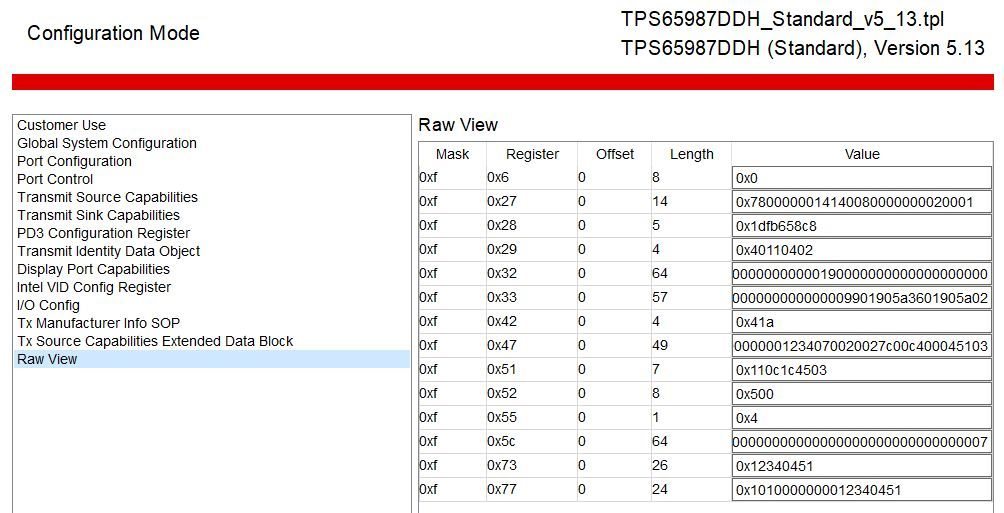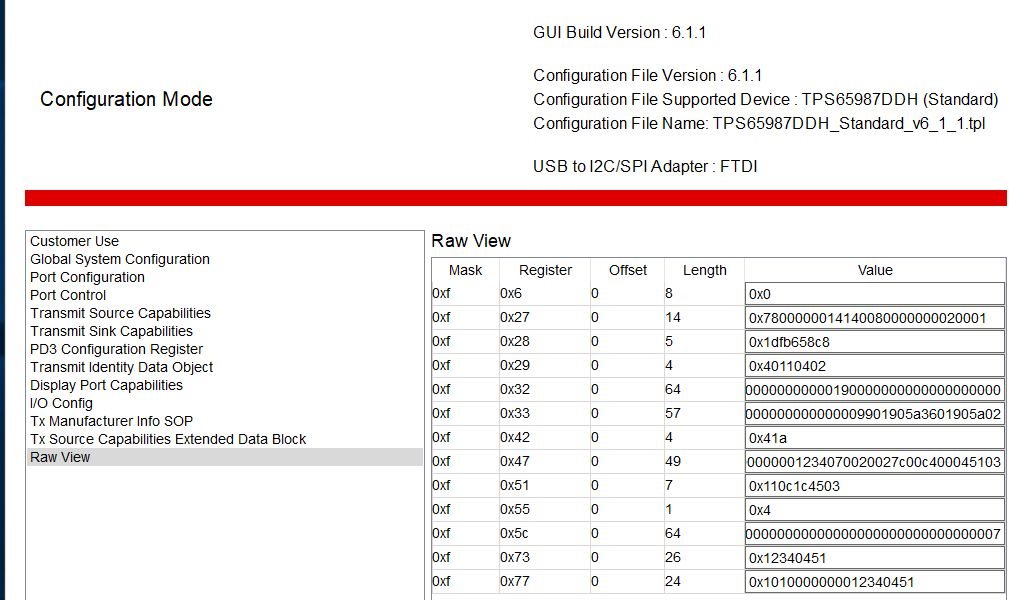Hello Support team,
My customer is evaluating TPS65987D on their board. When USB PD adapter is connected to their board, the VBUS voltage rise up to 20V, however, HV_PP switch never turn on. To turn on HV_PP, how should they set TPS65987D?
They can't use GUI on their board.
Thanks,
Koji Ikeda



